High-school brain researcher takes home $250,000 prize
Young scientists win big for brain research, math and analyzing computer networks
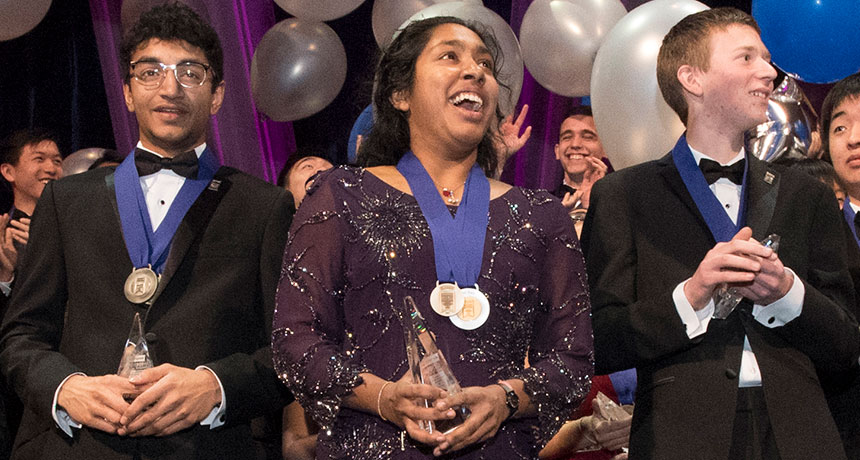
Indrani Das, center, won top prize in the Regeneron Science Talent Search. Aaron Yeiser (right) won second place and Arjun Ramani (left) took third place.
Chris Ayer/SSP
WASHINGTON, D.C. — Some teens might encounter a tough scientific problem and turn to adults for the answer. But all three top winners of this year’s Regeneron Science Talent Search saw hard problems and confronted them head-on. One fought the effects of brain injury. Another took on a new kind of math. A third found a speedy way to find connections between large groups — like someone’s large group of friends on Facebook.
Indrani Das, 17, took home the $250,000 first prize. Aaron Yeiser, 18, claimed second place and $175,000. Arjun Ramani, 18, was awarded $150,000 for third place.
“Talent is a wonderful thing. And you must have had a lot of it,” Angela Duckworth told the finalists at a gala award ceremony on March 14 at the National Building Museum. Duckworth, the evening’s keynote speaker, is a psychologist (someone who studies the mind) at the University of Pennsylvania in Philadelphia. She has also authored Grit: The power of passion and perseverance. Talent isn’t enough to get to the Science Talent Search, she noted. Duckworth said the finalists also must have grit. By that she meant they must have been “passionate about what they do and extraordinarily persevering.”
“Our finalists’ hard work and dedication have certainly translated into something special,” says Maya Ajmera. She is president and chief executive officer of Society for Science & the Public, which runs the competition. (The non-profit society also publishes Science News and Science News for Students.)
This year’s finalists are “exceptional young people,” Ajmera says. And, she proclaimed, they stand “poised to be the leaders of our scientific community.”
Society for Science & the Public created the annual Science Talent Search in 1942. Open to U.S. high school seniors, this competition brings 40 finalists to Washington, D.C., each year to show off their research. Regeneron — a company that develops and produces medicines for diseases such as asthma and cancer — became the competition’s sponsor last year. This year, Regeneron handed out prizes to the finalists totaling almost $2 million. Each finalist took home at least $25,000.
Helping injured brains heal themselves
Indrani is a senior at the Academy for Medical Science Technology in Hackensack, N.J. Three years ago, she discussed possible research projects with her research mentor and science teacher, Donna Leonardi. Indrani was looking for a medical challenge. “I wanted to work on something that was not curable,” she recalls.
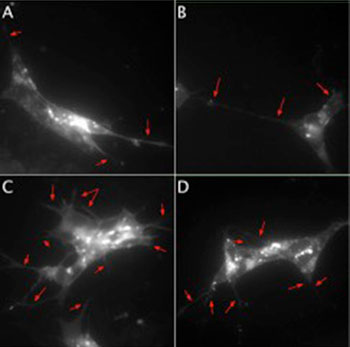
Leonardi mentioned having a friend with a deadly disease that kills brain cells. That story inspired Indrani to probe what makes injured brain cells die.
When a brain is injured, some of its cells — called neurons — can die. Support cells called astrocytes (AS-troh-sites) move in and surround the injured neurons. Those astrocytes should protect the injured cells from further damage. But sometimes, they actually make the situation worse. If they fail to clean up chemical trash from synapses (Sin-AP-sees) — areas between the injured cells — the leftover debris can poison the neurons. This can increase their death toll.
Glutamate (GLU-tah-mayt) is an important molecule that carries signals between brain cells. During injury, though, it can build up outside of neurons, killing them. Clearing it from the synapses might prevent nerve cells from dying, the teen reasoned. So she set out to find a way to do that.
She focused on a molecule that usually serves as a glutamate-grabbing vacuum. It’s known as EAAT2 (for excitatory amino acid transporter 2). Those glutamate vacuums normally reside on the outside edge of an astrocyte. But when these cells sense a nearby injury, they tuck their EEAT2 structures inside the cell. This lets glutamate build up outside, wreaking havoc.
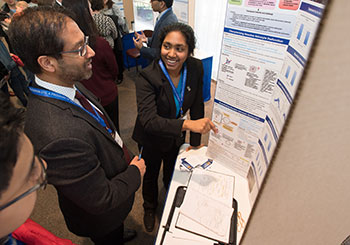
Working in the cell biology lab in her high school, Indrani added a tiny gene to those astrocytes. It produced a molecule that prompted the cells to shift their glutamate vacuums back to the outside of the cells. Now the astrocytes again sucked up glutamate, helping nearby neurons recover.
Indrani hopes that her research will help scientists focus on astrocytes as a target to fight brain injury and disease. And she’s already contributing in her own way. The teen is an EMT, or emergency medical technician. “It’s is my favorite activity of all time,” she says.
Making math meaningful
Aaron has always liked math. But this senior at Perkiomen Valley High School in Collegeville, Pa., notes that he also wanted to tackle “something that will be useful to other people.” And his project might do just that. For instance, it might be used to help design a better airplane wing.
The teen applied his skills to a type of math called partial differential equations. These are mathematical expressions that compare two things — with two rates of change — to each other. For example, as a plane flies, its speed changes. At the same time, the speed of the air hitting its wings also changes.
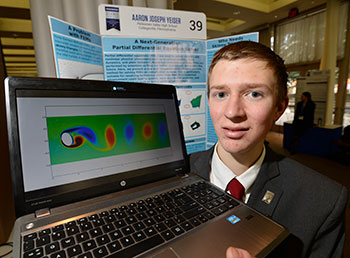
Normally, relating these two speeds to each other takes a long time. In this case, mathematicians might try to solve the problem by representing the areas involved (on the wing and in the air) as small triangles. “You break the big problem in to lots of little sub-problems,” Aaron explains. Each sub-problem (triangle) must be solved separately. And if those triangles get too narrow, they also become less accurate.
By working with mathematician Alex Townsend at Cornell University in Ithaca, N.Y., the teen found that four-sided shapes — such as rhombuses or trapezoids — worked better than triangles to analyze the problem. This way, the math was still accurate and Aaron could arrive at a solution more quickly.
Third-place winner, Arjun, attends West Lafayette Junior-Senior High School in Indiana. He has always loved patterns and tries “to make connections between seemingly unconnected areas.”
He decided to study very large patterns, which can be found in huge data sets, such as the number of molecules in the human body or the number of someone’s Facebook friends.
When dealing with huge sets of things, how do you identify which item is connected to some other one? Working with David Gleich, a computer scientist at nearby Purdue University, Arjun used a method based on Kronecker graphs. These graphs can generate random connections — or networks — between data points in some large set.
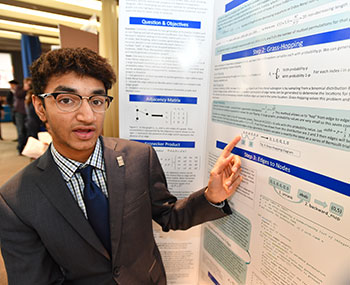
When forming a Kronecker graph, if Arjun had picked connections at random, he might by accident choose the same connection twice. And that would waste time. Instead, Arjun used math to lay out all of the potential connections in a line. He then selected connections, randomly, as he moved in one direction down that line. This kept him from picking the same one twice, allowing him to generate a graph slightly faster than before.
Arjun says he likes doing research for the same reason he loves to debate: He loves digging deeply into an idea. The teen hopes to compare his random networks to data in the real world, such as the connections between people on Facebook. “If I can find a network and a pattern [on Facebook], I could target ads there,” he says. Or, if he found a connection between proteins, it might one day help identify a harmful change that could lead to cancer.
Superstars of science
The fourth-place winner, Byron Xu, 17, took home $100,000. A senior at William P. Clements High School in Sugar Land, Texas, he used sound waves to determine ocean temperatures. His method is easier and faster than current methods that depend on sensors in the water, he says. It could be used to show how ocean temperatures have changed over time.
Archana Verma, 17, was awarded $90,000 for fifth place. She studied how chemical dyes absorb energy. The teen hopes to use such dyes to make windows that efficiently generate electricity from some of the sunlight hitting them. A senior at Jericho High School in New York, Archana published a paper based on her findings March 7 in the Journal of Physical Chemistry Letters.
Laura Catherine Pierson, 17, at the College Preparatory School in Oakland, Calif., came in sixth place, winning $80,000. She developed new ways to study groups of numbers or objects. The seventh-place prize, $70,000, went to Prathik Naidu, 18, of Thomas Jefferson High School for Science and Technology in Alexandria, Va. Prathik designed a computer program that looks for changes in genes that might lead to cancer.
Eighth place and $60,000 went to Ethan Joseph Novek, 18, of Greenwich High School in Connecticut. He designed a chemical process to capture carbon-dioxide gas. It’s a pollutant released by burning. His system saves 75 percent of the energy typically used to capture CO2.
Vrinda Madan, 17, took home the ninth-place prize of $50,000. This Lake Highland Preparatory School student in Orlando, Fla., found new drugs that might one day treat malaria. Stefan Wan, 17, took home the 10th-place prize of $40,000. A senior at Alexander W. Dreyfoos School of the Arts in West Palm Beach, Fla., he designed a method to suck up and reuse excess fertilizer that runs off of farms.
The remaining 30 finalists each received $25,000. All winners also received an all-expenses paid trip to Washington, D.C. On March 12, the 40 finalists presented their research to the public at the National Geographic Society. They also visited the National Institutes of Health in Bethesda, Md., and the Howard Hughes Medical Institute in Ashburn, Va.
“The Science Talent Search can help restore science to its rightful place,” said George Yancopoulos, one of the founders of Regeneron. To the finalists he said, “You’re all winners. You’re all our heroes. We are counting on you and many other bright young minds of your generation to save the world.”







